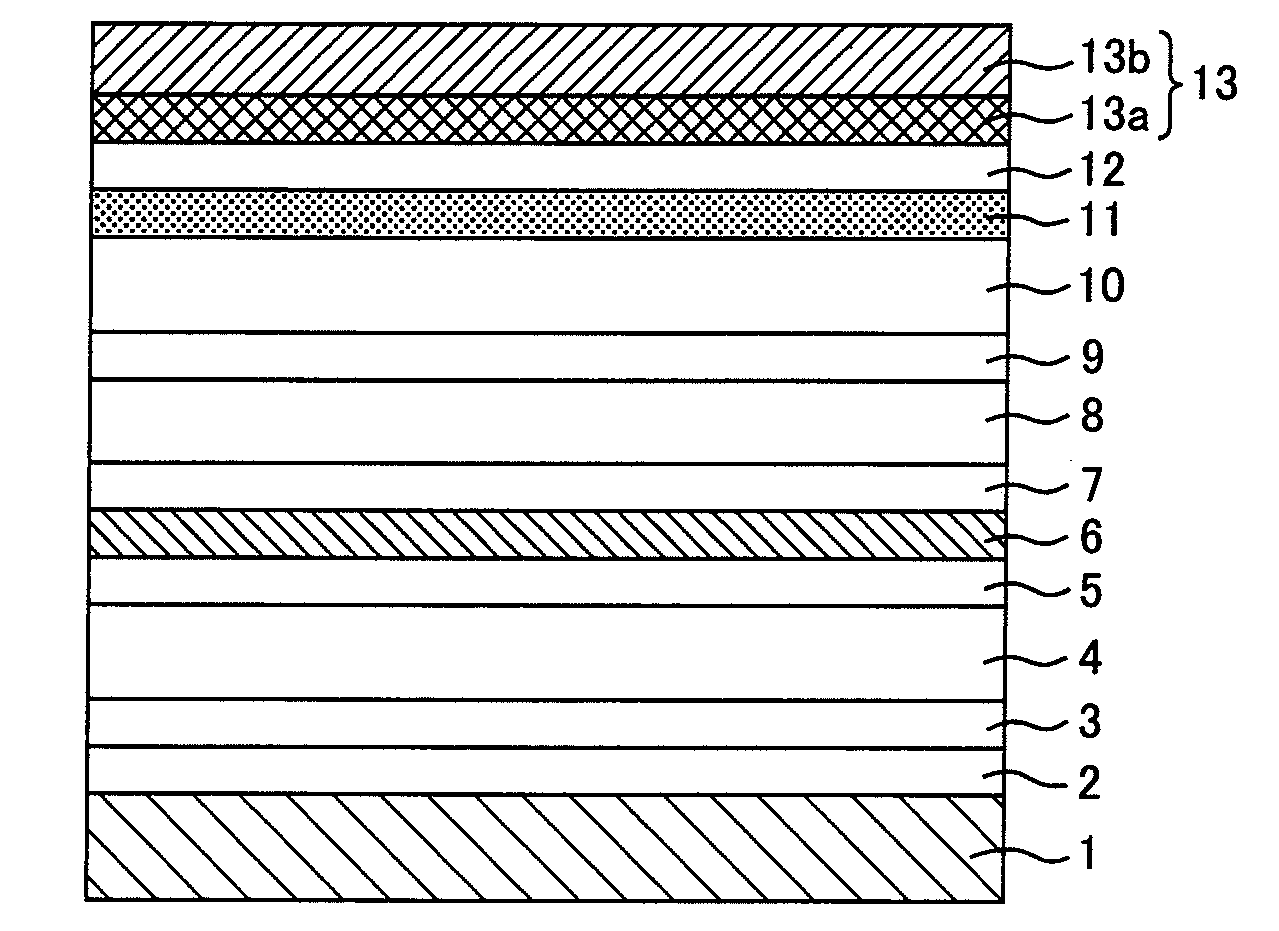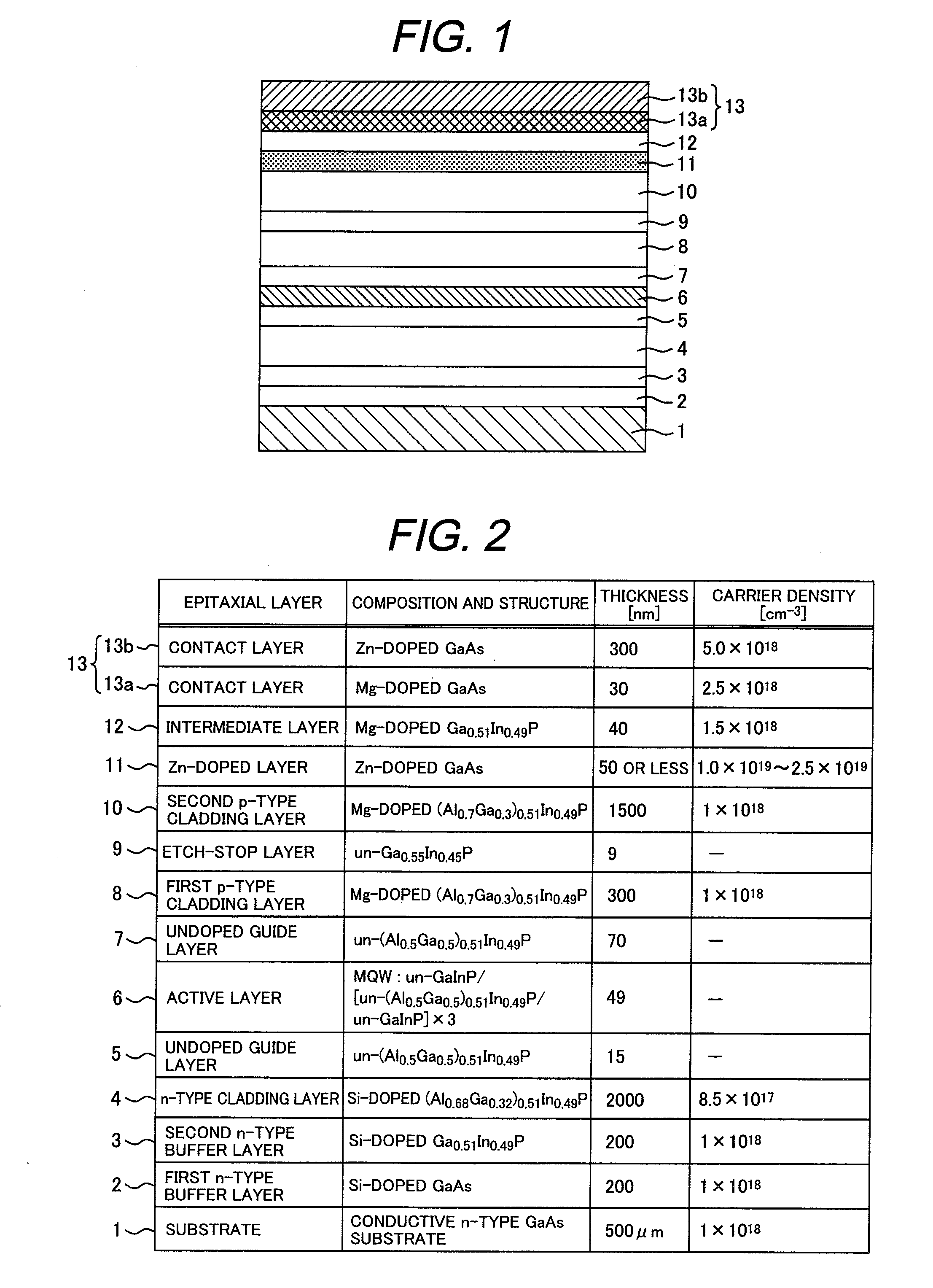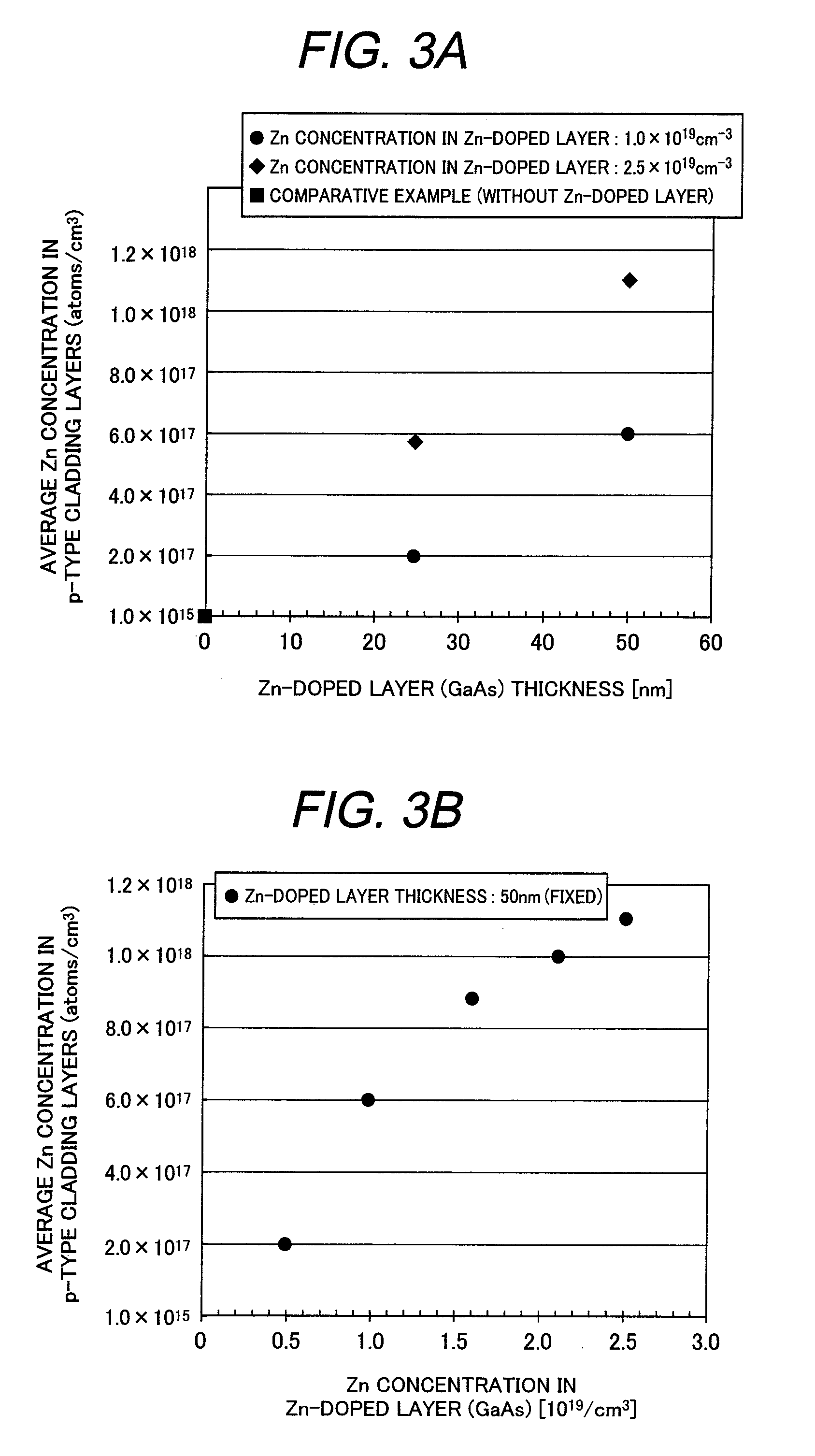Epitaxial Wafer for Semiconductor Light Emitting Diode and Semiconductor Light Emitting Diode Using Same
a light-emitting diode and semiconductor technology, applied in semiconductor devices, lasers, semiconductor lasers, etc., can solve the problems of deterioration of light-emitting characteristics in the active layer, affecting the operation reducing the lifetime of the semiconductor light-emitting device, so as to achieve high-reliability, stable high-output operation
- Summary
- Abstract
- Description
- Claims
- Application Information
AI Technical Summary
Benefits of technology
Problems solved by technology
Method used
Image
Examples
example 1
[0039]An epitaxial wafer for a semiconductor light emitting device (semiconductor laser) in Example 1 has the same cross sectional structure as in the above embodiment shown in FIG. 1. Detail specifications, e.g., composition, structure, thickness, and carrier density of each epitaxial layer are shown in FIG. 2. FIG. 2 is a table indicating a structure of an epitaxial wafer for a semiconductor light emitting device in Example 1 of the present invention. The symbol “un-” in FIG. 2 represents “undoped”.
[0040]As shown in FIG. 2, the epitaxial wafer for a semiconductor light emitting device in Example 1 has, on an n-type GaAs substrate 1 made of GaAs: a first buffer layer 2 made of GaAs; a second buffer layer 3 made of Ga0.51In0.49P; an n-type cladding layer 4 made of (Al0.68Ga0.32)0.51In0.49P; an undoped guide layer 5 made of (Al0.50Ga0.50)0.51In0.49P; an active layer 6 having a multiple quantum well (MQW) structure; an undoped guide layer 7 made of (Al0.50Ga0.50)0.51In0.49P; a first p...
example 2
[0046]Example 2 differs from Example 1 in that after the second p-type cladding layer 10 made of AlGaInP was grown, Zn planer doping was carried out to form the Zn planer-doped layer, instead of stacking the Zn-doped layer 11 made of GaAs on the second p-type cladding layer 10 as in Example 1. The other aspects were the same as in Example 1.
[0047]In Example 2, the Zn flow rate during planer doping and a time of the planer doping were changed to investigate the influence to the amount of Zn which diffused into the second p-type cladding layer 10. Experimental results are shown in FIGS. 4A and 4B. FIG. 4A is a graph showing a relationship between average Zn concentration in the p-type cladding layers and the planer doping time during the growth in Example 2 of the present invention; FIG. 4B is a graph showing a relationship between average Zn concentration in the p-type cladding layers and the Zn flow rate during the planer doping in Example 2 of the present invention. As mentioned ab...
PUM
 Login to View More
Login to View More Abstract
Description
Claims
Application Information
 Login to View More
Login to View More - R&D
- Intellectual Property
- Life Sciences
- Materials
- Tech Scout
- Unparalleled Data Quality
- Higher Quality Content
- 60% Fewer Hallucinations
Browse by: Latest US Patents, China's latest patents, Technical Efficacy Thesaurus, Application Domain, Technology Topic, Popular Technical Reports.
© 2025 PatSnap. All rights reserved.Legal|Privacy policy|Modern Slavery Act Transparency Statement|Sitemap|About US| Contact US: help@patsnap.com



